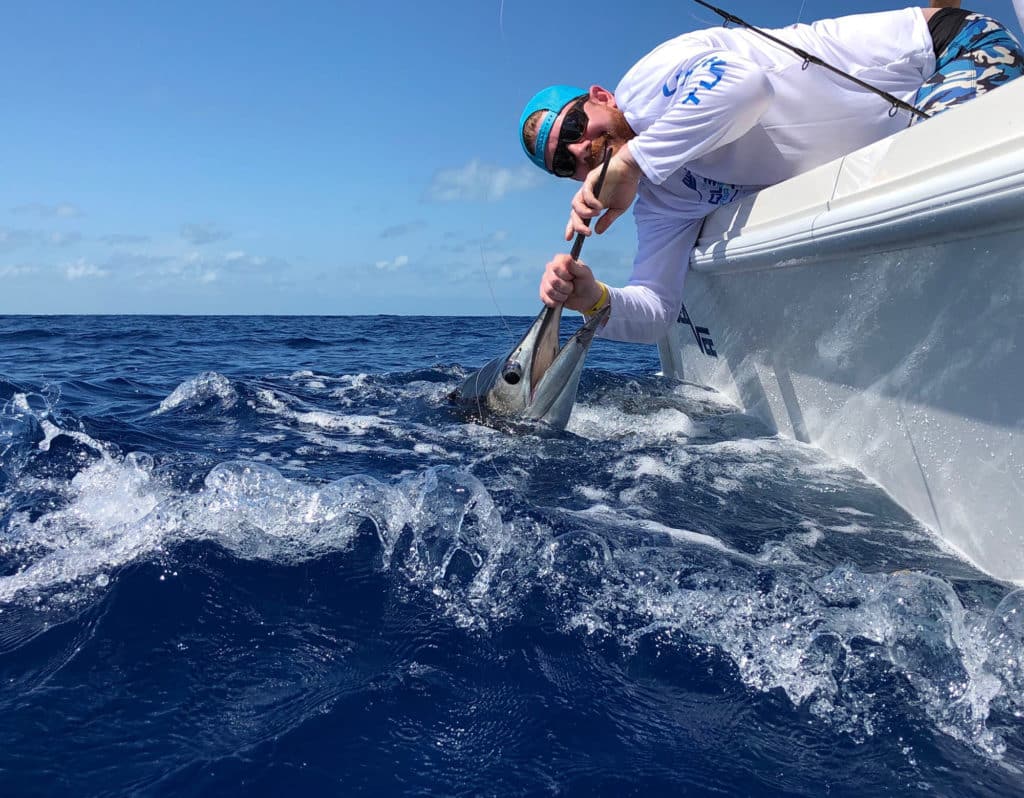
While most Southerners shiver at dropping temperatures, Florida fishermen eagerly look forward to December cold fronts because they herald the arrival of sailfish season. Cooler days with blustery winds motivate the acrobatic billfish to migrate south along Florida’s Atlantic coast, which motivates anglers, especially those who compete in sailfish tournaments, to stock up on bait and ready their tackle.
Devilish Details
Although sails can be caught by drifting live sardines or trolling dead ballyhoo, serious sailfish anglers usually fly two fishing kites and use a variety of baits. Standard tackle includes a 20-pound conventional outfit with 15 feet of 30-pound fluorocarbon leader. However, successful captains such as Casey Hunt of Key West and John Dudas of Miami really dive into the details. They use precise and consistent techniques, and they build every rig beforehand.
“Every single time a line goes in the water, it’s perfect,” says Hunt, who has won billfish tournaments from Florida to the Bahamas to North Carolina. “The hooks, the knots… You’ve got to spend that extra time because that extra time is going to catch you more fish.”
Consider what often happens when you don’t take that time, whether you’re fishing in a tournament or you’re out on the weekend with friends:
- A sailfish grabs one of your baits, jumps and snaps the leader because it’s chafed or your knots weren’t snugged correctly.
- More hungry sailfish swarm behind your boat, but the worn circle hooks that you used on your previous three trips won’t hold. So you scramble to tie a new hook to some leader material, fasten it to a line and cast out another bait. But by now, the fish have lost interest.
Dudas always keeps spinning rods rigged and ready to pitch live baits to sailfish that come to the surface outside of the fishing-kite spread. That has helped him win countless tournaments from Palm Beach to the Florida Keys.
He also constantly evaluates the 20 fishing kites he carries aboard his boat. “Make sure your kite flies the same, even if you used it yesterday,” says Dudas, who labels those kites based on whether they fly better to the left or to the right. “Fly a kite while you’re catching bait to test it out.”
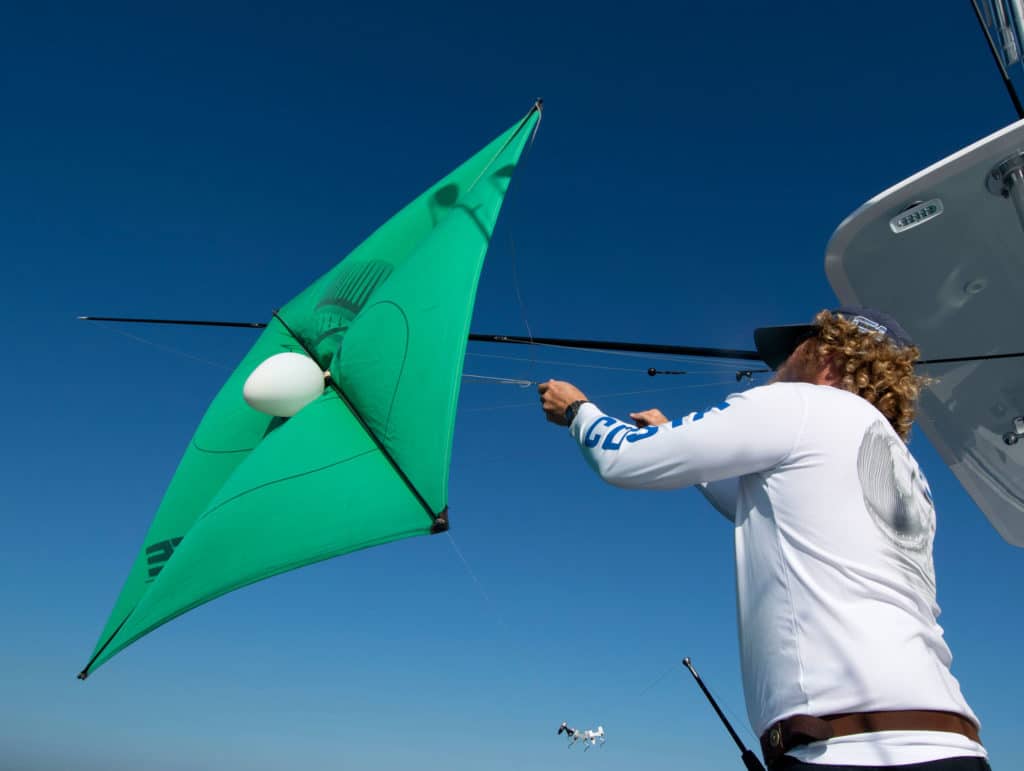
Fish Finding
As they head offshore, captains consider everything from water color and clarity to the presence of baitfish and birds to determine where to start fishing. Capt. Mark Lamb of West Palm Beach likes to fish along an edge where the water color turns from green to deep blue.
Lamb runs out to water depths of 100 to 120 feet to start looking. “I’m going to look for a temperature change and bait, like flying fish,” he says. “I’m going to set up on that edge where the bait is. Put the boat out in the blue water and put the baits out on that edge.”
If sailfish don’t bite at first, stay put and keep fishing, because they’ll eventually show up to eat, he says. “Sometimes you’ve got to be patient and fish rather than run around. In a sailfish tournament, two or three or four fish can change everything in minutes. You’re never out of it in a sailfish tournament,” he says.
Edges can be tougher to find on cold-front days when the wind howls out of the northwest. Under those conditions, Lamb slow-trolls live baits and often fishes around wrecks, which, like edges, attract bait.
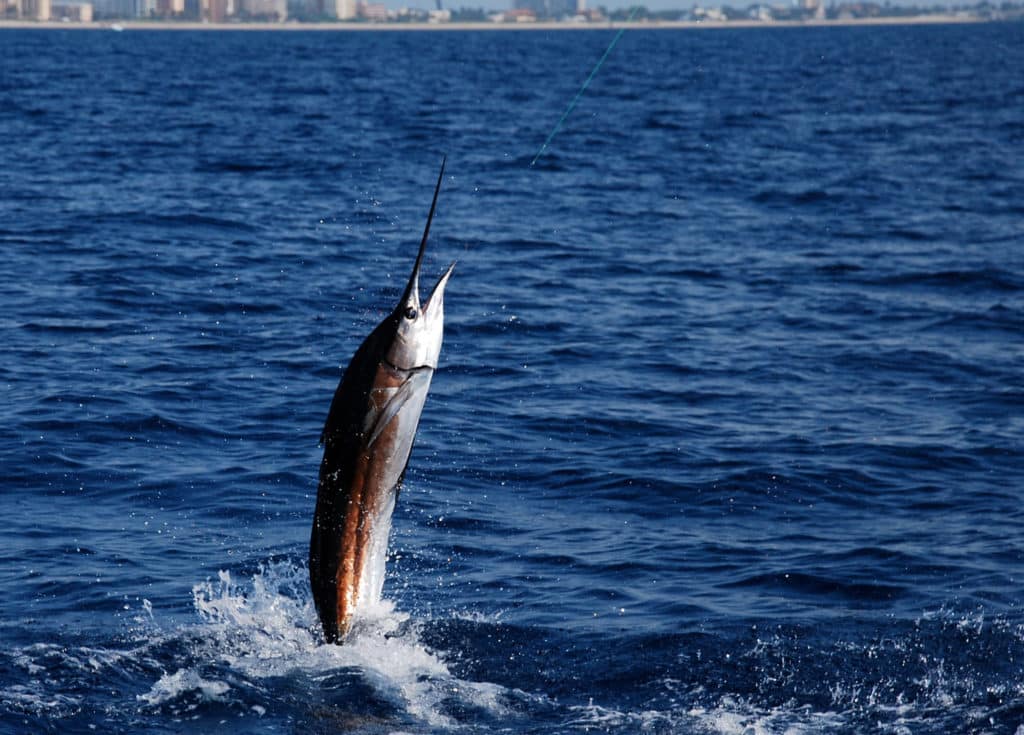
Bait Tips
Capt. Skip Dana of Deerfield Beach also likes to fish along color changes. He uses baits such as goggle-eyes, threadfin herring and sardines.
If there’s enough wind to fly a fishing kite, he’ll put out two kites with three lines on each. The goggle-eyes, which are bigger, go on the farthest lines because they stay in the water better. The herring might go on the middle or short lines, and the smaller sardines go on the short lines.
Dudas, who prefers herring, bridles all his baits with a rubber band to a 5/0 or 6/0 circle hook. He wants his kite baits splashing on the surface or just below the surface because that attracts fish. Some anglers say they get more bites with their baits 4 to 6 feet under the surface, but that’s asking for trouble, Dudas says. “If a bait is 6 feet down, a fish can get tangled in the leader,” he adds.
Most anglers attach a foam float or tie a ribbon on the main line above the swivel connected to the leader so they can more easily track the baits, but Capt. David Doll of Lighthouse Point does not. He once hooked a big kingfish on a kite line marked with a chartreuse ribbon. As the fish swam away, taking the ribbon underwater, a second kingfish bit the ribbon, cutting the line.
To ensure live kite baits remain frisky, check them periodically by reeling them into the air. If they look tired, replace them; fresh baits react naturally to sailfish. If a sailfish approaches a lethargic bait, the sail instinctively knows something’s wrong and won’t bite.
To make his baits act as natural as possible, Doll uses 3/0 and 4/0 circle hooks instead of the more typical 5/0 to 7/0 sizes. “The idea is to have baits as lively and unencumbered as possible, so when a sailfish comes up, the bait reacts and triggers a strike,” Doll says. “When the fish are biting like crazy, it doesn’t matter, but when fishing is tough, it does.”
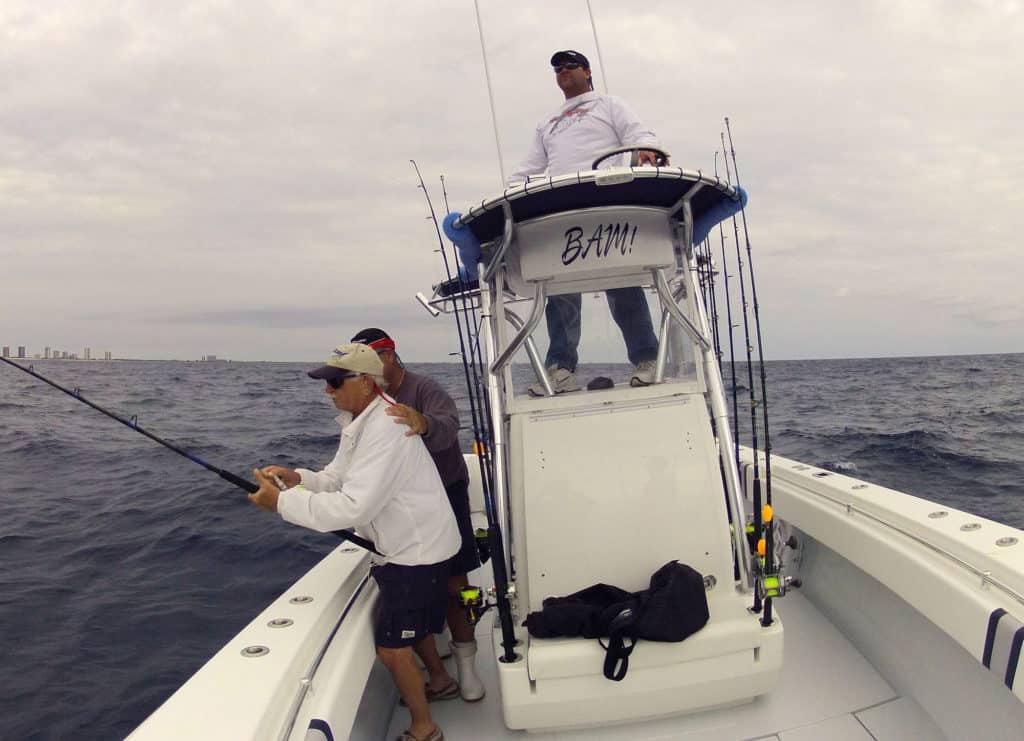
Battle Tactics
Circle hooks make hooking sailfish fairly easy. Instead of yanking the fishing rod to set the hook, you just reel. But don’t start reeling too soon and pull the bait out of the fish’s mouth, Dudas says. Make sure the sail is swimming away before you start reeling. “You want some type of angle,” he says, “so if the fish is coming to you, don’t reel.”
When a sailfish bites, don’t immediately bring in all the other lines; sailfish often travel in groups. “Sit tight, back off the drag and let him go,” says Hunt of the first hooked sailfish. “The longer you sit, the better chance you have of getting another bite.”
If you leave baits in the water, “the odds of catching a double or triple are probably 80 percent,” says Lamb, who directs the angler with the first fish toward the bow while he positions the boat to keep the baits in the strike zone.
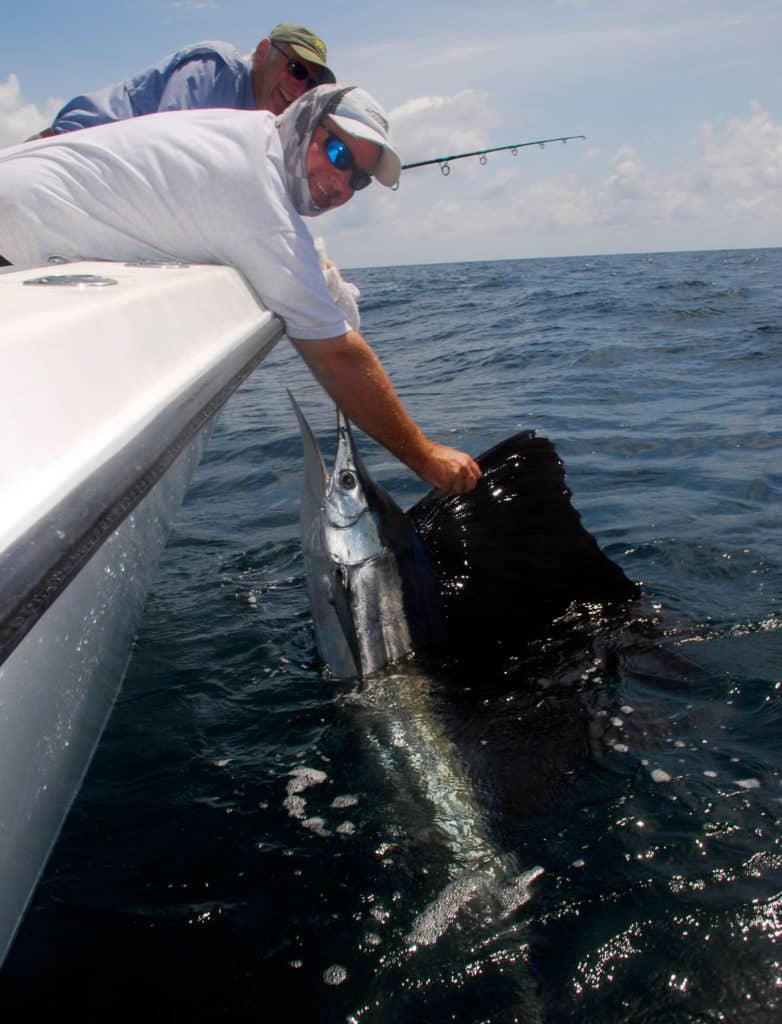
Shallow Sails
While kite-fishing, Dudas scans the ocean for free-jumping sailfish or signs of sailfish. If he sees something promising, he runs to it while his crew baits those pre-rigged spinning rods. “When you see showering ballyhoo, the longer they run, the better the chance it’s going to be a sailfish” chasing them, Dudas says. “If they’re jumping up and go right back in, they’re probably being chased by kingfish or bonito.”
Read Next: Sailfish Tips and Tactics
Although 100 to 200 feet of water represents the magic depth range for South Florida sailfish, Dudas and Hunt run to shallow water when they see showering ballyhoo. “On really slow days when there’s no current, the sailfish come in to feed on the ballyhoo in 15 feet,” Hunt says. “Sailfish are very finicky when they’re shallow, so we’ll use 2/0 hooks, a 30-pound leader and a pilchard, ballyhoo or sardine.”
To make that drastic change, the captains again harp on preparation. Be ready for anything, and you’ll have lots to celebrate this sailfish season.








